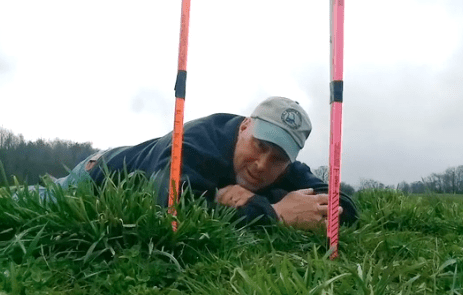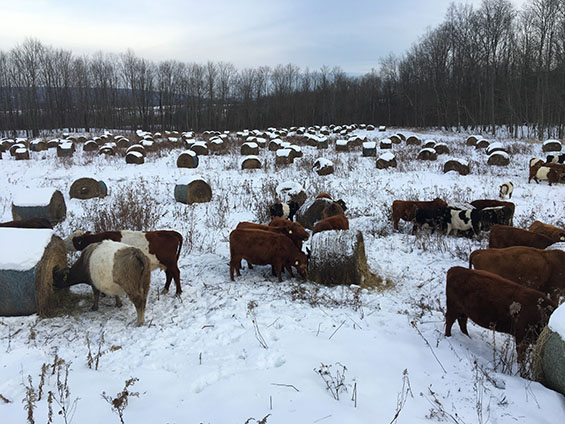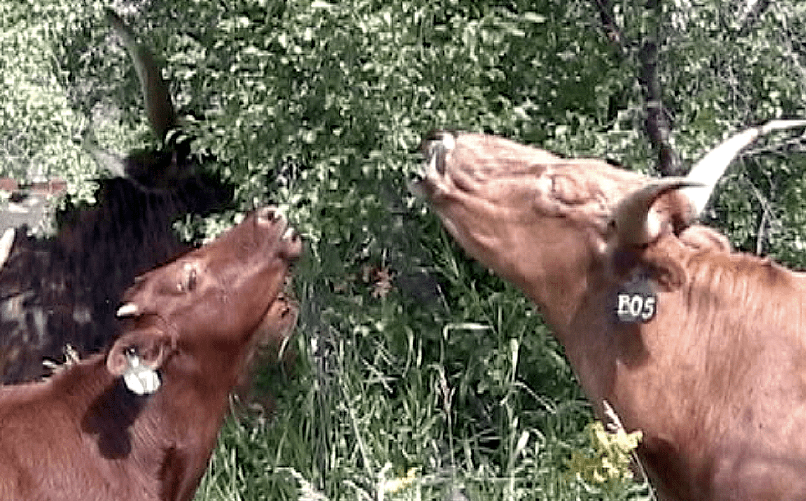Last week we talked about relieving ourselves of the the burden of trying to feed 9 billion people, and focusing instead on feeding the soil. By looking at it that way we can make healthier choices for our environment. Ray Archuleta and Jeff Rasawehr described this using the terms ecological farming or biological farming. The idea is to make soil health be the goal, not production. “Farm while treating soil as a habitat,” explains Ray.
With improved soil health, production will increase. Not all at once, but within 3-5 years, soils that had been farmed with heavy use of chemical inputs (fertilizers, pesticides) will be more productive with fewer inputs, cycling nutrients more effectively, and protecting crops against pests and diseases.
Here are seven, simple steps we can take to increasing production by farming for soil health instead of yields.

1. Keep the soil covered.
Cover crops are a must. Only a small percentage of farmers use them, and that’s a shame. Cover crops’ roots provide exudates that feed microbes, and microbes keep the soil alive. Not to mention that cover crops lead to increased yields and reduced fertilizer costs. It’s a win-win, we might say.
Here are some On Pasture articles about cover crops:
• Science Backs Profits from Grazing Cover Crops
• The $200 Cover Crop Bump
2. Avoid Tilling.
Tillage provides some benefits, and is sometimes needed. But although it may aerate lower soils, it reduces aggregation, speeds up organic matter decomposition, and reduces microbial populations in the surface, where most of the action is.
Here’s what we’ve found about the results of one form of pasture tilling:
Keyline Plowing: What Is It? Does It Work?
Keyline Plowing Gets You 522,270 Worms for $280
3. Inoculate.
Another idea may be to inoculate your soil with biological inoculants to increase the number and diversity of soil organisms present. Be careful, though, because there is plenty of snake oil out there. Make sure that you are reaching for biologically-based products, and try them out on a small area first to see if they are worth the money and time.
Inoculation is good when you’re introducing a new plant/crop and can be as easy as adding a cupful of inoculant to a whole bag of seed.
4. Reduce Toxicity
Avoid applying all chemicals that might kill microbes. This may include chemicals designed to target one pest species, but may unintentionally harm other species as well. Prophylactic use of antibiotics can mean that livestock are excreting antibiotics that then harm soil organisms if they don’t break down completely.

5. Avoid Monocultures
Diversity is key for soil biology. Diverse crops mean that you are feeding the soil organisms a diverse menu of carbon. Diversify your hayfields, your pasture, your cover crops. Your soil will be healthier and your operation will be more resilient in the face of drought, or other weather problems. Have fun with it, and try new things.
6. Practice Better Grazing Management
Avoid overgrazing (and increase diversity). Jeff and Ray do a lot of traveling across the US, and both have seen so many pastures that are straight tall fescue, and so many places where the herd should have been moved- last week! Overgrazing can mean waiting a year to recover, or five years or more in more brittle environments. Manage grazing efficiently, to take what is there, and to give land time to recover. Try seeding in some crops for fall or spring grazing to add diversity, legumes for nitrogen, and to provide a grazing option that might not have been there.
7. Innovate
There are so many things to try. Read about them, or ask your NRCS, Conservation District or Extension staff about what’s new on the horizon. Find out about about overseeding with new plants, try new cover crops. Try out chicory, radishes, clover, turnips. Add peas to the mix. There are many new hybrids with valuable traits that might be worth the extra cost of the seed. Keep on trying new things, and keep adding diversity, pay attention to outcomes and keep notes so you can figure out what works best, and you’ll find new ways to be successful.
Here are some On Pasture articles about some plants you might consider adding to your pasture:
• Radishes to Garnish Salads – and Pastures
• Frost-seeding Red Clover in Hay Fields and Pastures
• Addressing Concerns About Red Clover in Pastures
• Planting Peas in Pasture
 Jeff and Ray see this as a new understanding of the world. Let’s get away from the fear of having to feed 9 billion people, and think about how to make the soil as healthy as possible. That is one part of the solution of how to feed the world, and, in full disclosure, it may be a favorite part for On Pasture. Switching from a chemical system to a biological one is a huge change. Let’s build a network of farms across the US and the world that are farming for soil health.
Jeff and Ray see this as a new understanding of the world. Let’s get away from the fear of having to feed 9 billion people, and think about how to make the soil as healthy as possible. That is one part of the solution of how to feed the world, and, in full disclosure, it may be a favorite part for On Pasture. Switching from a chemical system to a biological one is a huge change. Let’s build a network of farms across the US and the world that are farming for soil health.




